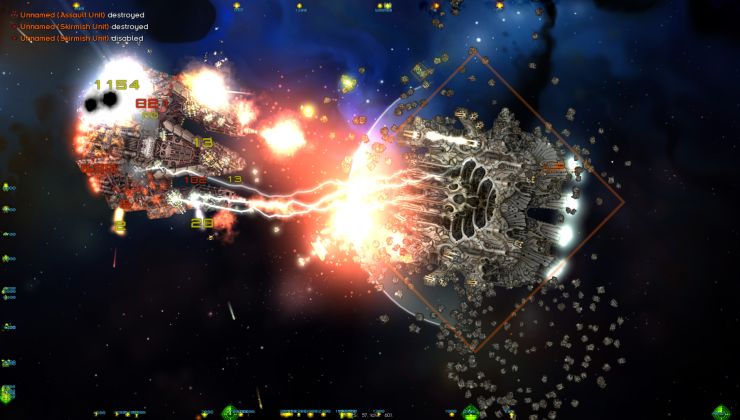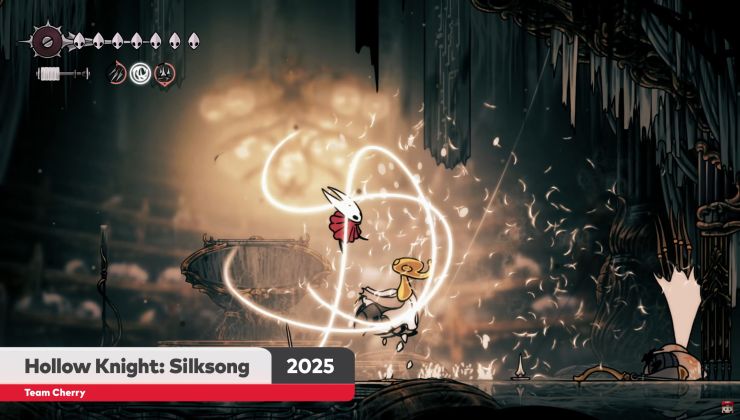It looks like in the last few days the 'nvc0' driver for Nvidia cards in Mesa has hit OpenGL 4.5 compatibility, joining Intel and AMD. Another great week, see this commit for the magic.
The last extension needed was 'GL_ARB_enhanced_layouts' from OpenGL 4.4 (with OpenGL 4.5 already done) which is now enabled for 'nvc0'.
All the different driver naming schemes sure are confusing. You can see more about the Nvidia codenames here. This states the 'nvc0' driver is for the 'Fermi' generation and some of 'Kepler'.
As always, you can keep track on the MesaMatrix website.
There's work still to be done to bring older generations of all GPU vendors up to scratch too, so Mesa is far from finished. On top of that they still have the extensions not tied to a particular version of OpenGL.
The last extension needed was 'GL_ARB_enhanced_layouts' from OpenGL 4.4 (with OpenGL 4.5 already done) which is now enabled for 'nvc0'.
All the different driver naming schemes sure are confusing. You can see more about the Nvidia codenames here. This states the 'nvc0' driver is for the 'Fermi' generation and some of 'Kepler'.
As always, you can keep track on the MesaMatrix website.
There's work still to be done to bring older generations of all GPU vendors up to scratch too, so Mesa is far from finished. On top of that they still have the extensions not tied to a particular version of OpenGL.
Some you may have missed, popular articles from the last month:
All posts need to follow our rules. For users logged in: please hit the Report Flag icon on any post that breaks the rules or contains illegal / harmful content. Guest readers can email us for any issues.
Nice to see more improvements in Mesa all around. My laptop became useless after fglrx was deprecated, but I put Xubuntu 16.10 on last night. Looks like it's running r600 because I have OpenGL 4.1 support on it now. Before, I had 3.x support only, essentially turning my laptop into a hunk of trash.
0 Likes
So the code is there to display things correctly, but the card GPU speed can't be turned up due to "clocking support" being encrypted/closed somehow in order to fully utilize NVIDIA cards so we could actually use the open source driver for gaming?
Correct. Nvidia locked all the power management stuff down (at least) in firmware, which requires a lot of the functionality to be signed by Nvidia to work. That's why I would strongly suggest anyone who believes in free software and wants to support it to avoid modern Nvidia graphics cards.
3 Likes
AMD is also locked in its own way AFAIK
It uses proprietary microcode, but is only there for DRM features used exclusively by Windows. The components that are locked should never be used anyway. In other words, it's not locked at all.
If AMD released a free software microcode option, that would be perfect since we could plainly see it's not trying to do anything evil. eg. it would prevent AMD coming out with a microcode you could buy to get an increase in Mhz as Intel have done in the past with their CPUs. As it stands today, the proprietary microcode is the reason a lot of distributions don't support modern GPUs. eg. Trisquel, GuixSD, etc. But it's a very minor problem (for AMD cards) all things considered. You could make the same claim about Intel graphics as well.
Closed hardware is fine as long as the specifications regarding how to use it are available.
Last edited by boltronics on 20 Oct 2016 at 5:19 am UTC
2 Likes
Interestingly, with latest kernel releases including 4.4.24 my nvidia cards (optimus and 760) stopped freezing with the nvc0 driver... seems as if they finally fixed what ever caused the freezes, so I'm finally able to use the open source drivers (and within that, I can finally test wayland :-)).
I'm very happy about that, since long-term I'd like to go for the nvc0 driver for most of my computers (except for the one running SteamOS, I still don't trust the driver for games).
Last edited by STiAT on 20 Oct 2016 at 11:31 am UTC
I'm very happy about that, since long-term I'd like to go for the nvc0 driver for most of my computers (except for the one running SteamOS, I still don't trust the driver for games).
Last edited by STiAT on 20 Oct 2016 at 11:31 am UTC
0 Likes
I'm very happy about that, since long-term I'd like to go for the nvc0 driver for most of my computers (except for the one running SteamOS, I still don't trust the driver for games).If your goal is to go open source, I'd strongly advise you to buy an AMD card for several reasons:
1. AMD are more open source-friendly than NVIDIA
2. So AMD has a nice advance in how the open source communities work (it can take ages to push a patch to the Linux kernel if you're doing it wrong)
3. I've been using the r600 drivers for quite some time and was able to play most of the games (like Cities: Skyline, but not Alien: Isolation)
4. I've bought an RX 480 and now I can play Alien: Isolation ;)
5. Since AMD is more open-source friendly, we'll see much more improvements and optimizations on their open source drivers
6. RADV (which also proves point 5. ;))
Last edited by Creak on 20 Oct 2016 at 2:27 pm UTC
0 Likes
Well, regarding overcloking Kepler is really OK, it just needs proper testing done so they can turn it on by default and dynamically. Same with Fermi. Maxwell and Pascal is issue here, and yes, to support good vendor who delivers open source drivers (yes, closed firmware but that's discussed above) it is worth to pick AMD, it start to work properly again on Linux.
So despite all shortcomings this is awesome news. I am certainly look forward to use Nouveau with my GTX 760.
Now work can start on optimizations to get it working even faster than binary drivers.
So despite all shortcomings this is awesome news. I am certainly look forward to use Nouveau with my GTX 760.
Now work can start on optimizations to get it working even faster than binary drivers.
0 Likes







 How to set, change and reset your SteamOS / Steam Deck desktop sudo password
How to set, change and reset your SteamOS / Steam Deck desktop sudo password How to set up Decky Loader on Steam Deck / SteamOS for easy plugins
How to set up Decky Loader on Steam Deck / SteamOS for easy plugins
See more from me